Happy Friday GPODers!
We’re back in Albany, Georgia today to see more of the spring color that has emerged from Julie Prince’s garden so far this year. If you missed yesterday’s post, check it out here: Part 1. Otherwise, enjoy the rest of Julie’s spectacular spring plants.
My garden has slowly unfolded. We enjoyed (???) a rare snow event in Southwest Georgia on January 22. In our yard we measured 6.5 inches accumulation, and it hung around for several days. I had no idea what would survive and what would suffer from the cold and wet conditions. I have been pleasantly surprised! The plants emerged pretty much as they would have otherwise, but it has been one thing at the time, thus the individual pictures.
Happy Gardening!
Julie Prince
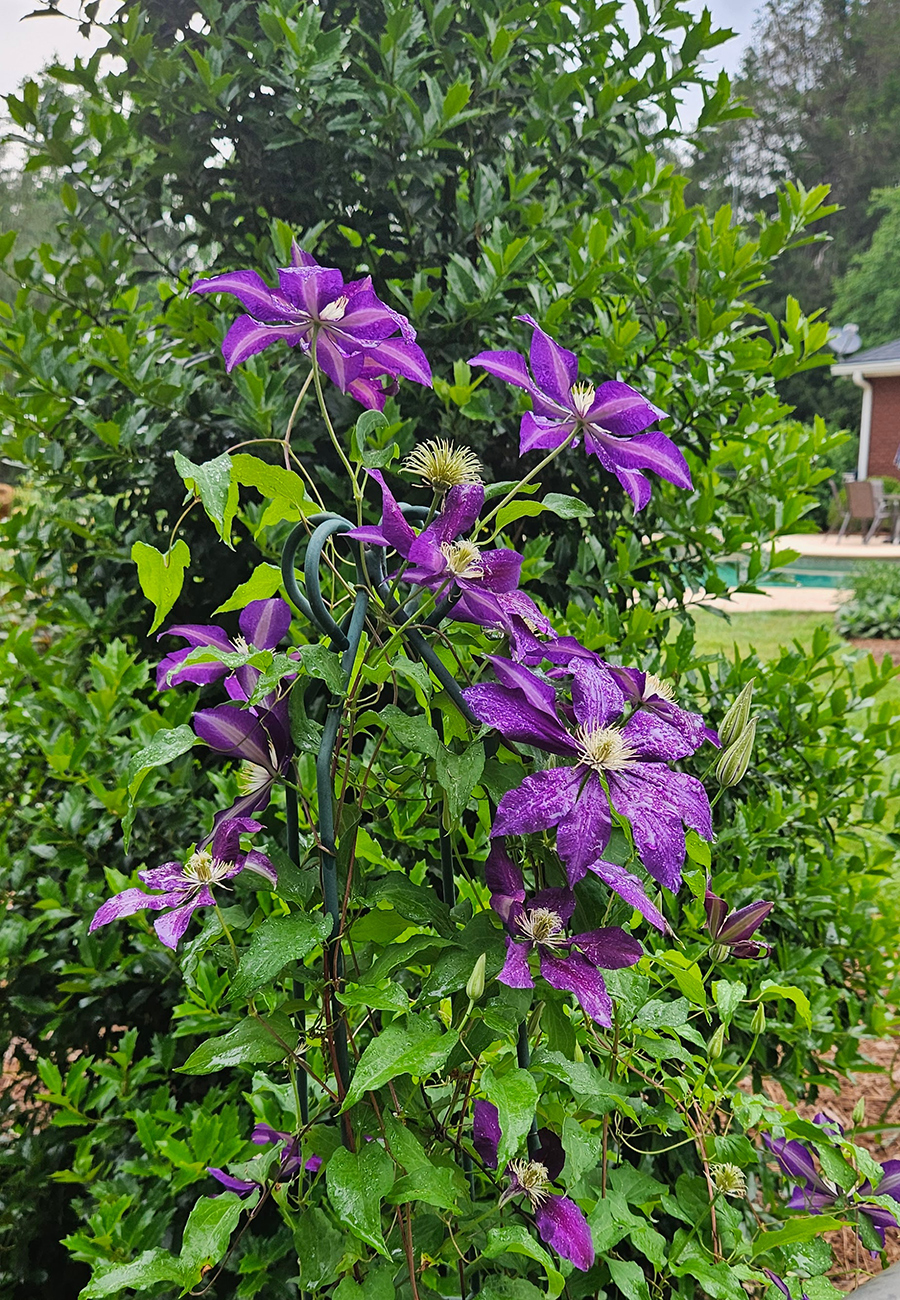 Clematis, amaryllis, Iceberg rose (Rosa ‘KORbin’, Zones 5–9) and red-hot poker (Kniphofia uvaria, Zones 5–9) showed off next.
Clematis, amaryllis, Iceberg rose (Rosa ‘KORbin’, Zones 5–9) and red-hot poker (Kniphofia uvaria, Zones 5–9) showed off next.
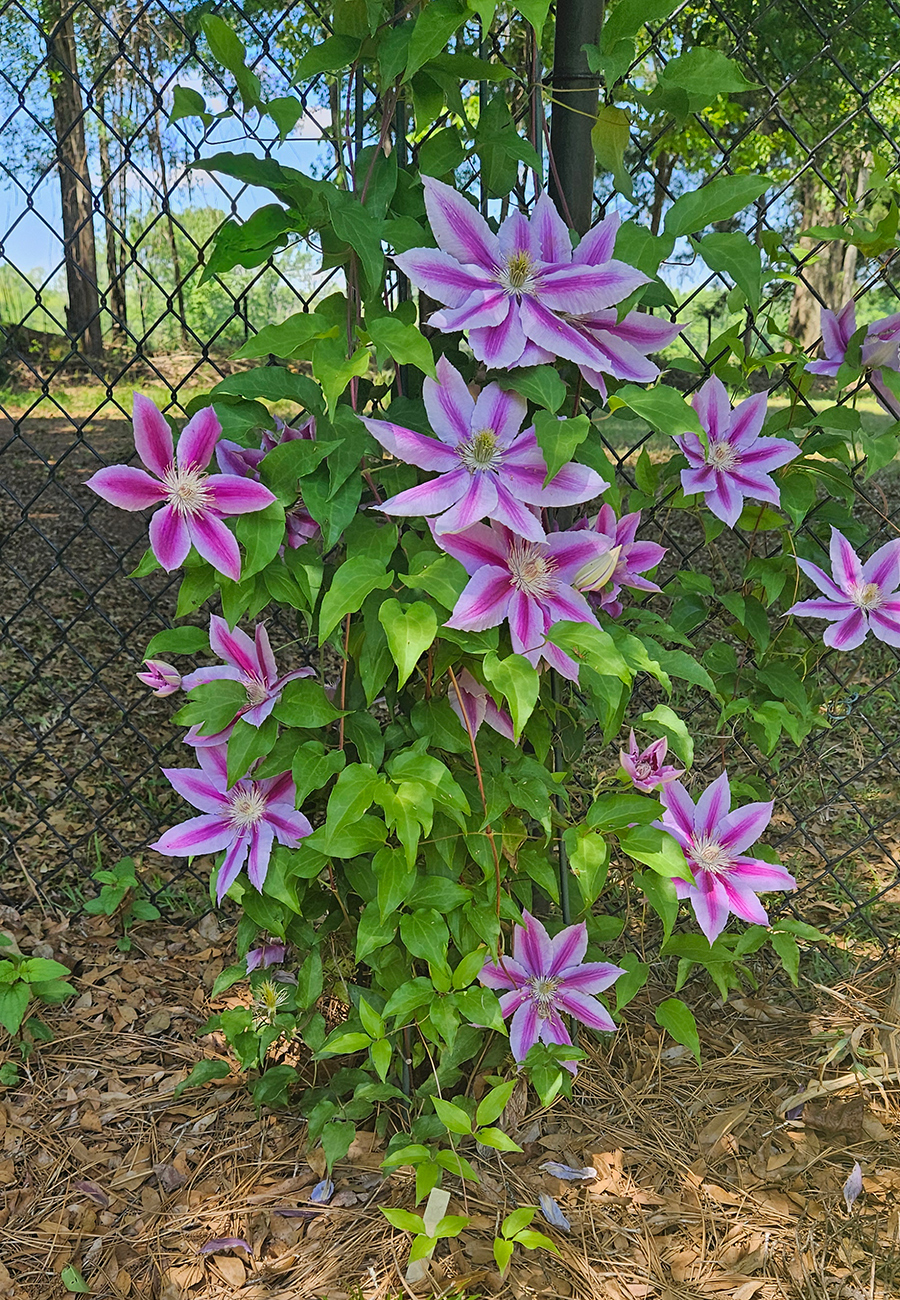 Along with the regal purple clematis Julie showcased above, she also has a beautifully striped Doctor Ruppel clematis (Clematis ‘Doctor Ruppel’, Zones 4–8) adorning her fence.
Along with the regal purple clematis Julie showcased above, she also has a beautifully striped Doctor Ruppel clematis (Clematis ‘Doctor Ruppel’, Zones 4–8) adorning her fence.
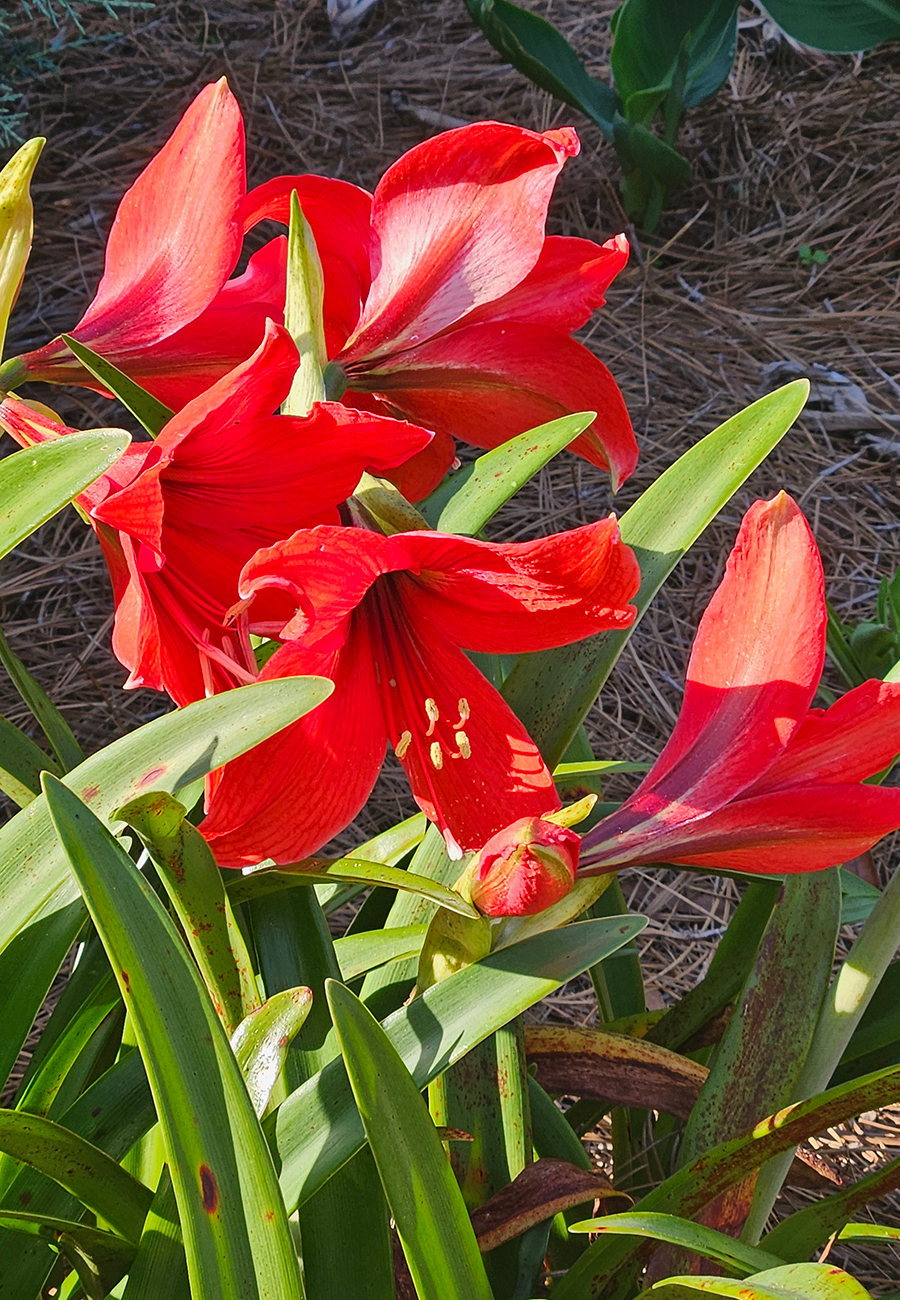 As a northern gardener, it’s always a treat to see amaryllis thriving in a southern garden rather than dipped in wax as part of a holiday display. This red cultivar is a bold pop in Julie’s spring garden.
As a northern gardener, it’s always a treat to see amaryllis thriving in a southern garden rather than dipped in wax as part of a holiday display. This red cultivar is a bold pop in Julie’s spring garden.
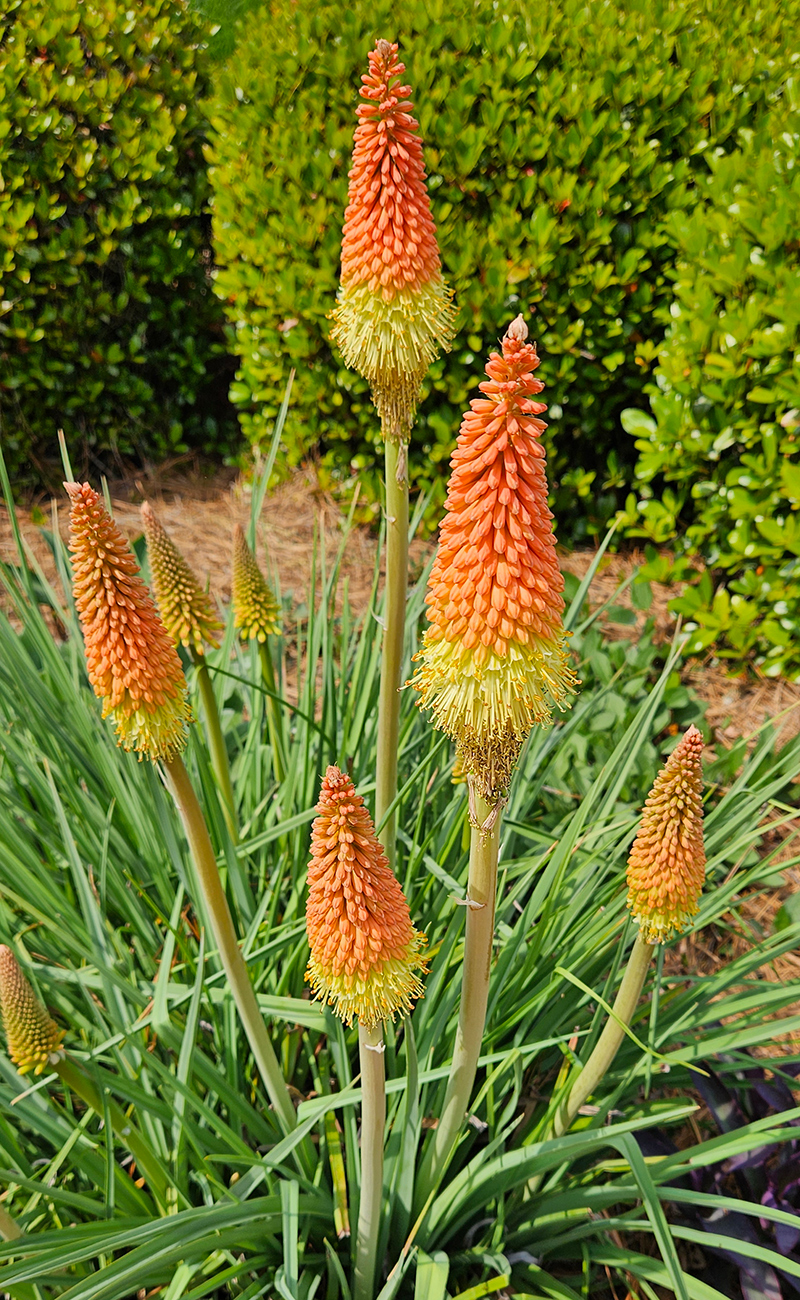 With their tall spikes of blooms, red-hot poker make for another bold pop of color in the early season.
With their tall spikes of blooms, red-hot poker make for another bold pop of color in the early season.
 A pink geranium (Pelargonium × hortorum, Zones 10–11) has burst into bloom after being carefully transported indoors and outdoors throughout the winter months.
A pink geranium (Pelargonium × hortorum, Zones 10–11) has burst into bloom after being carefully transported indoors and outdoors throughout the winter months.
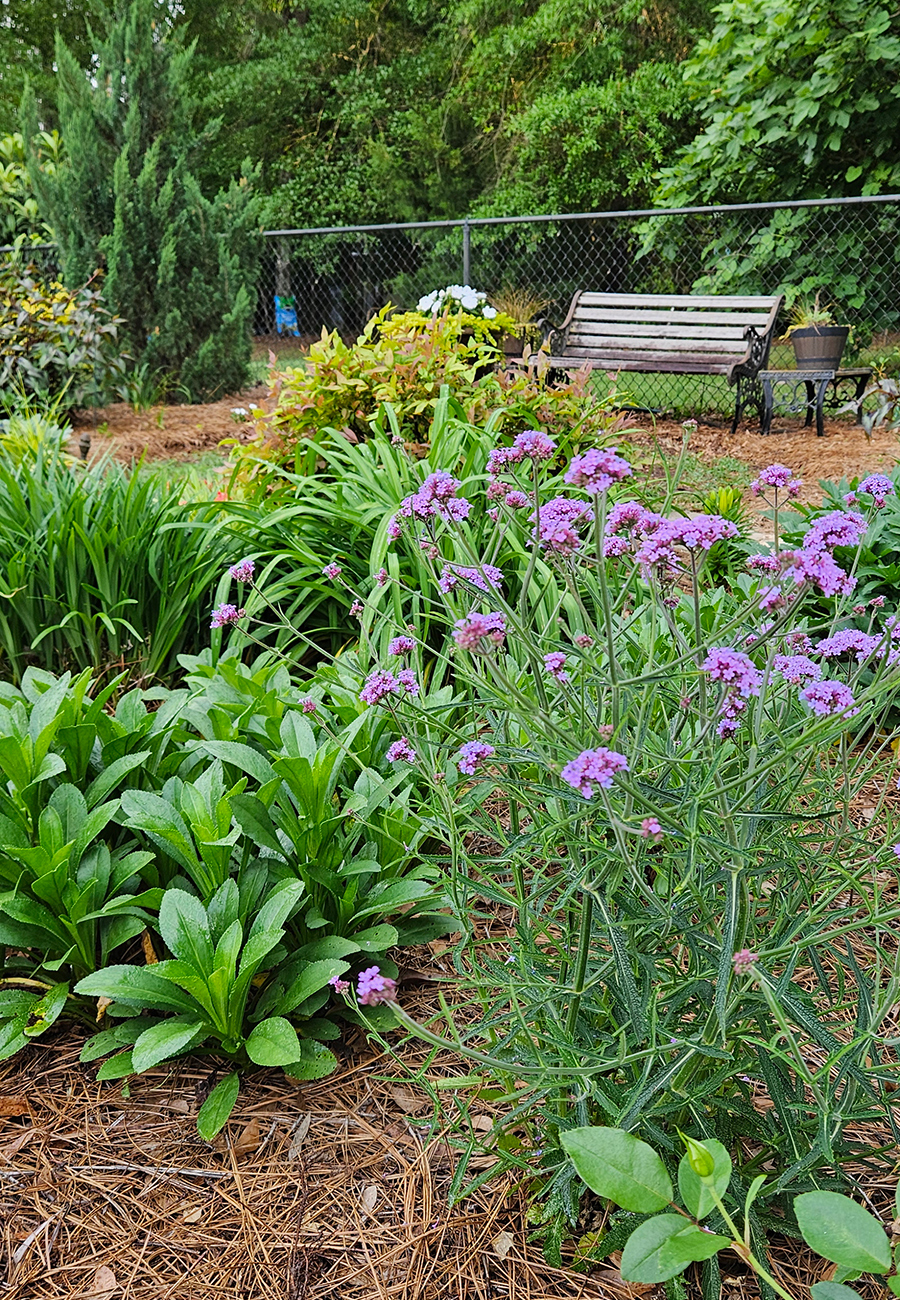 I have tried several times without success to grow the tall verbena (Verbena bonariensis, Zones 7–10). Much to my surprise, it not only survived the snow, but thrived!
I have tried several times without success to grow the tall verbena (Verbena bonariensis, Zones 7–10). Much to my surprise, it not only survived the snow, but thrived!
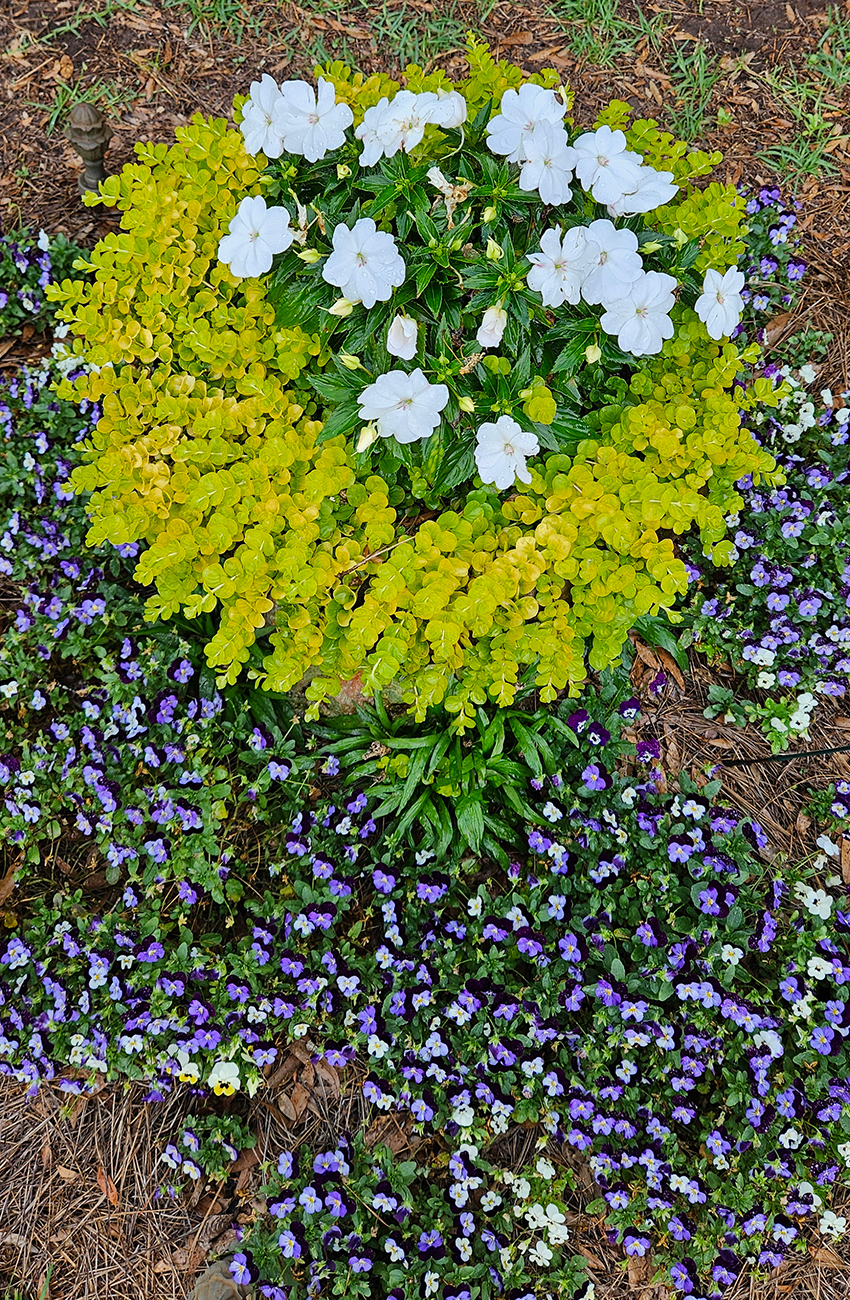 There is a view looking down on a pot planted with a white sunpatien (Impatiens x hybrida, annual) and creeping jenny (Lysimachia nummularia, Zones 4–8), surrounded by pansies.
There is a view looking down on a pot planted with a white sunpatien (Impatiens x hybrida, annual) and creeping jenny (Lysimachia nummularia, Zones 4–8), surrounded by pansies.
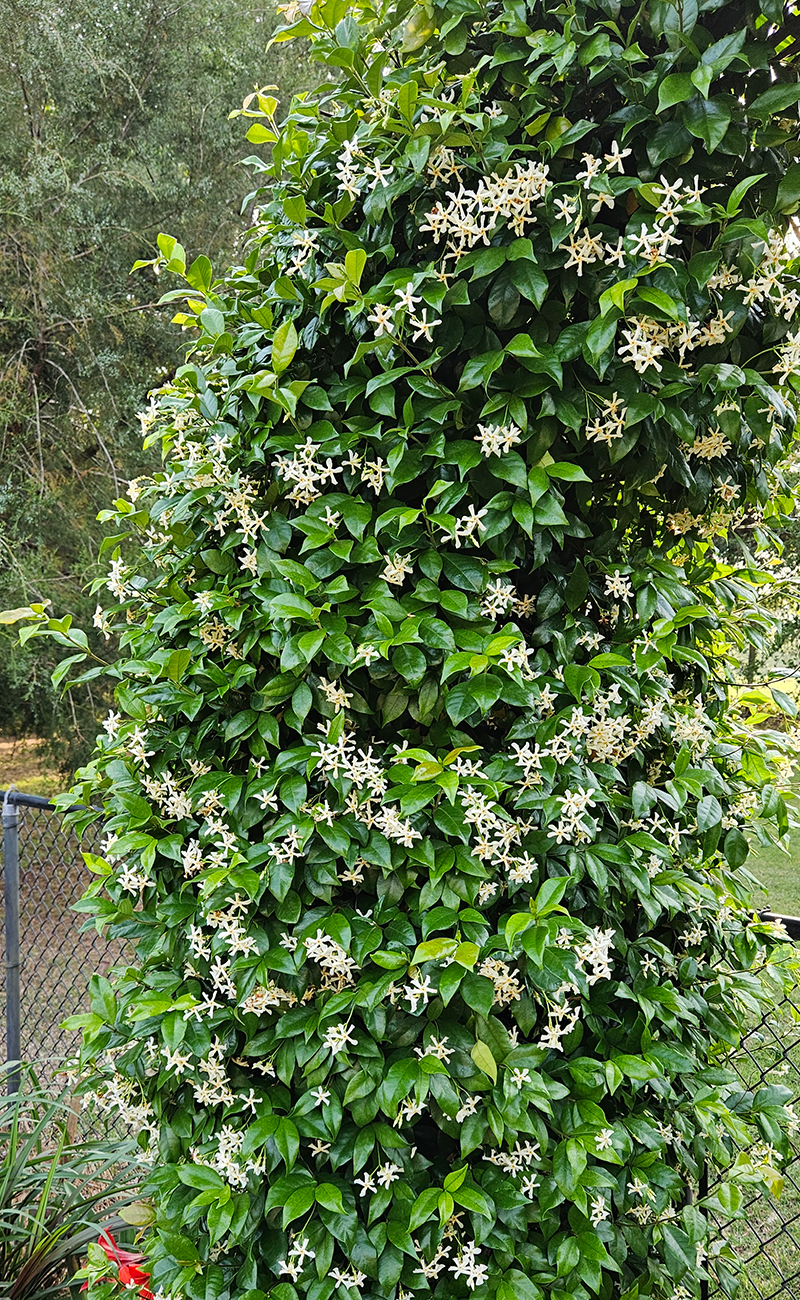 The star jasmine (Trachelospermum jasminoides, Zones 8–11) is still blooming and smells divine.
The star jasmine (Trachelospermum jasminoides, Zones 8–11) is still blooming and smells divine.
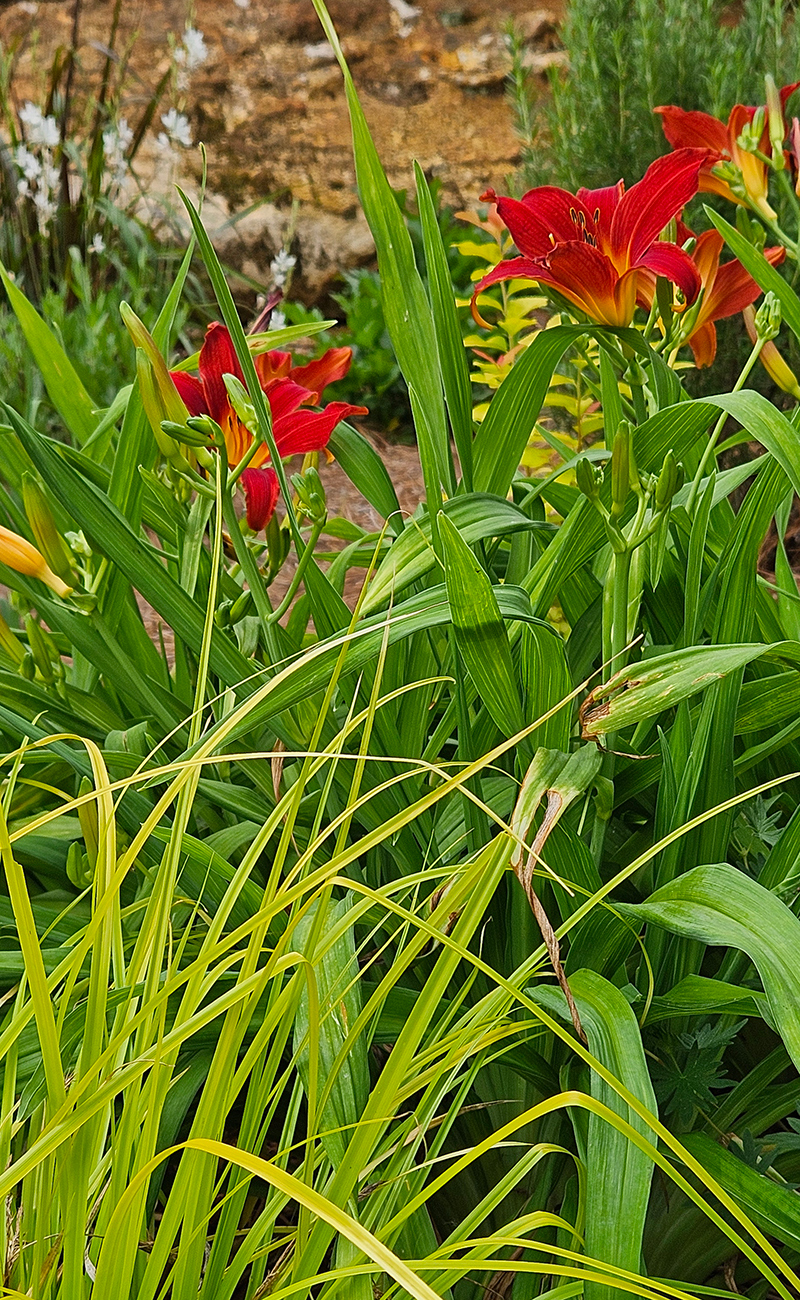 One clump of daylily is blooming very early. I hope it is a rebloomer!
One clump of daylily is blooming very early. I hope it is a rebloomer!
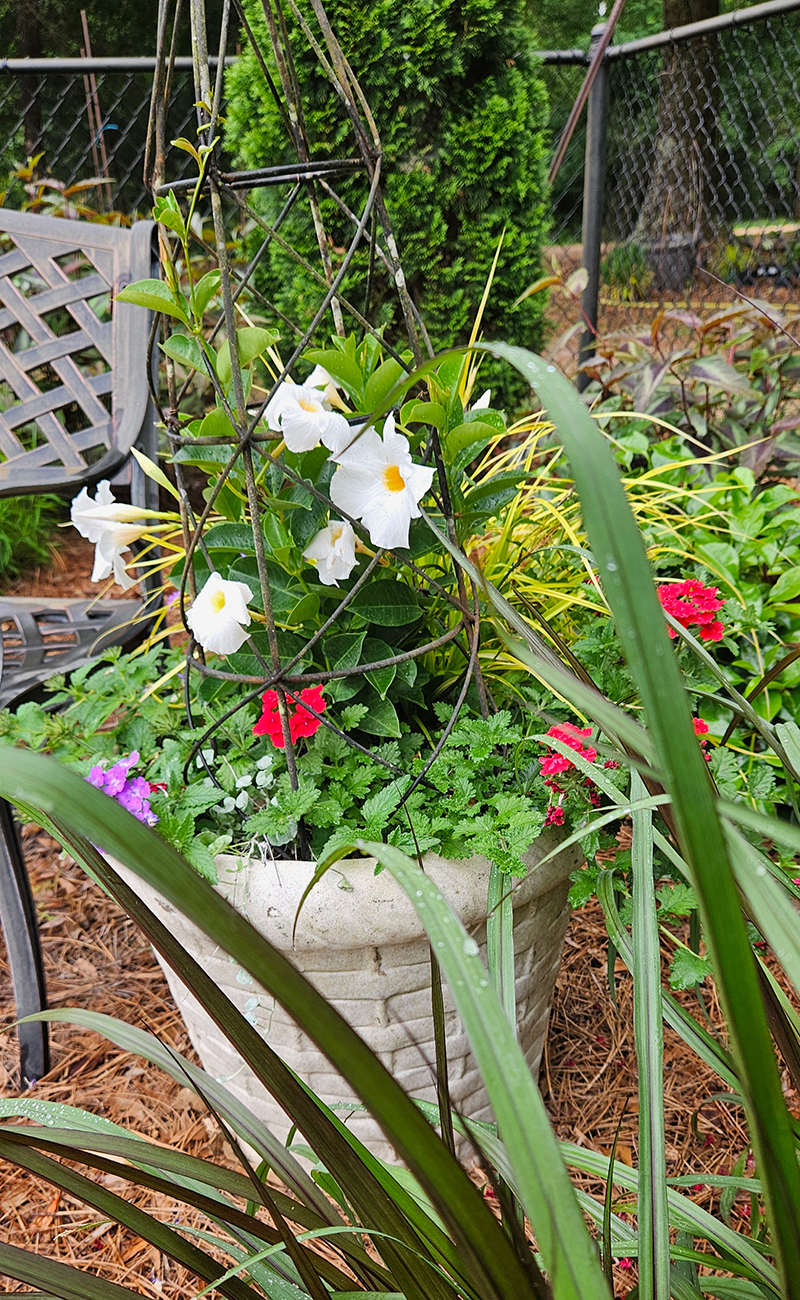 I don’t like seeing the chain link fence in the background, but it won’t be visible for long. The blue sky vine (Thunbergia grandiflora, Zones 8–11), moon vine (Ipomoea alba, Zones 10–12) and sweet autumn clematis (Clematis terniflora, Zones 5–11) are all growing like kudzoo!! It has started out to be a dry season. I am praying for a change for the flowers and for our farm!
I don’t like seeing the chain link fence in the background, but it won’t be visible for long. The blue sky vine (Thunbergia grandiflora, Zones 8–11), moon vine (Ipomoea alba, Zones 10–12) and sweet autumn clematis (Clematis terniflora, Zones 5–11) are all growing like kudzoo!! It has started out to be a dry season. I am praying for a change for the flowers and for our farm!
Thank you so much for sharing all of these incredible spring photos with us, Julie! Your garden has so many delights, and I’m thrilled to hear it is withstanding our unpredictable climate.
How did your garden withstand winter this year? Are your plants emerging strong despite inclement weather, or are you having to evolve and adapt as new weather or wildlife challenges come your way? While you’re out in your garden this weekend, consider taking some photos to share with Garden Photo of the Day. Follow the directions below to submit photos via email, or send me a DM on Instagram: @agirlherdogandtheroad.
We want to see YOUR garden!
Have photos to share? We’d love to see your garden, a particular collection of plants you love, or a wonderful garden you had the chance to visit!
To submit, send 5–10 photos to [email protected] along with some information about the plants in the pictures and where you took the photos. We’d love to hear where you are located, how long you’ve been gardening, successes you are proud of, failures you learned from, hopes for the future, favorite plants, or funny stories from your garden.
Have a mobile phone? Tag your photos on Facebook, Instagram or Twitter with #FineGardening!
Do you receive the GPOD by email yet? Sign up here
Fine Gardening Recommended Products

ARS Telescoping Long Reach Pruner
Fine Gardening receives a commission for items purchased through links on this site, including Amazon Associates and other affiliate advertising programs.
Telescopes from 4 to 7′. Cut and Hold (160) Blades. Drop forged blades for unsurpassed long lasting sharpness. Lightweight, 2.3 lbs., for continued use. Perfectly balanced for easy pruning.

Organo Republic 16 Perennial Wildflower Seeds Mix for Indoor & Outdoors
Fine Gardening receives a commission for items purchased through links on this site, including Amazon Associates and other affiliate advertising programs.
Premium 16 Perennial Wildflower Seeds Mix – Special Garden Flower Seeds Blend designed for planting indoor & outdoors across North America. With over 16 varieties and 100,000 wildflower seeds, this mix is the best solution to attract pollinators – bees, butterflies & birds are essential for garden plants health. Our Special Perennial Wildflower Seeds Mix Includes White Yarrow, Columbine, New England Aster, Siberian Wallflower, Shasta Daisy, Lance-Leaf Coreopsis, Sweet William, Purple Coneflower, Blanketflower, Gayfeather, Blue Flax, Lupine, Dwarf Evening, Primrose, Mexican Hat, Prairie Coneflower, Black Eyed Susan. Easy & Fun Growing Experience with our online guides – Don’t plant disappointment – Add more colors to your wildflower garden! We send only super hearty heirloom flower seeds with the highest germination rate and fast sprout. Our detailed growing guide helps you grow seeds the garden of your dream like a PRO. Colorful Wildflower Garden from Seeds – Grow wildflowers everywhere – Indoor in window garden or Outdoors Flower garden Garden make a beautiful design for your garden borders, pathways, field or meadow and attract pollinators. Made in the USA by Small Family-Owned Business – Quality You Can Trust – Our wildflower bulk seeds variety pack are tested at the highest germination rates before being sealed to last for up to 3 years before you need to plant. Each packet of our flower seeds variety pack is resealable to make it easy to store and has its own label with a QR code for the growing instructions.
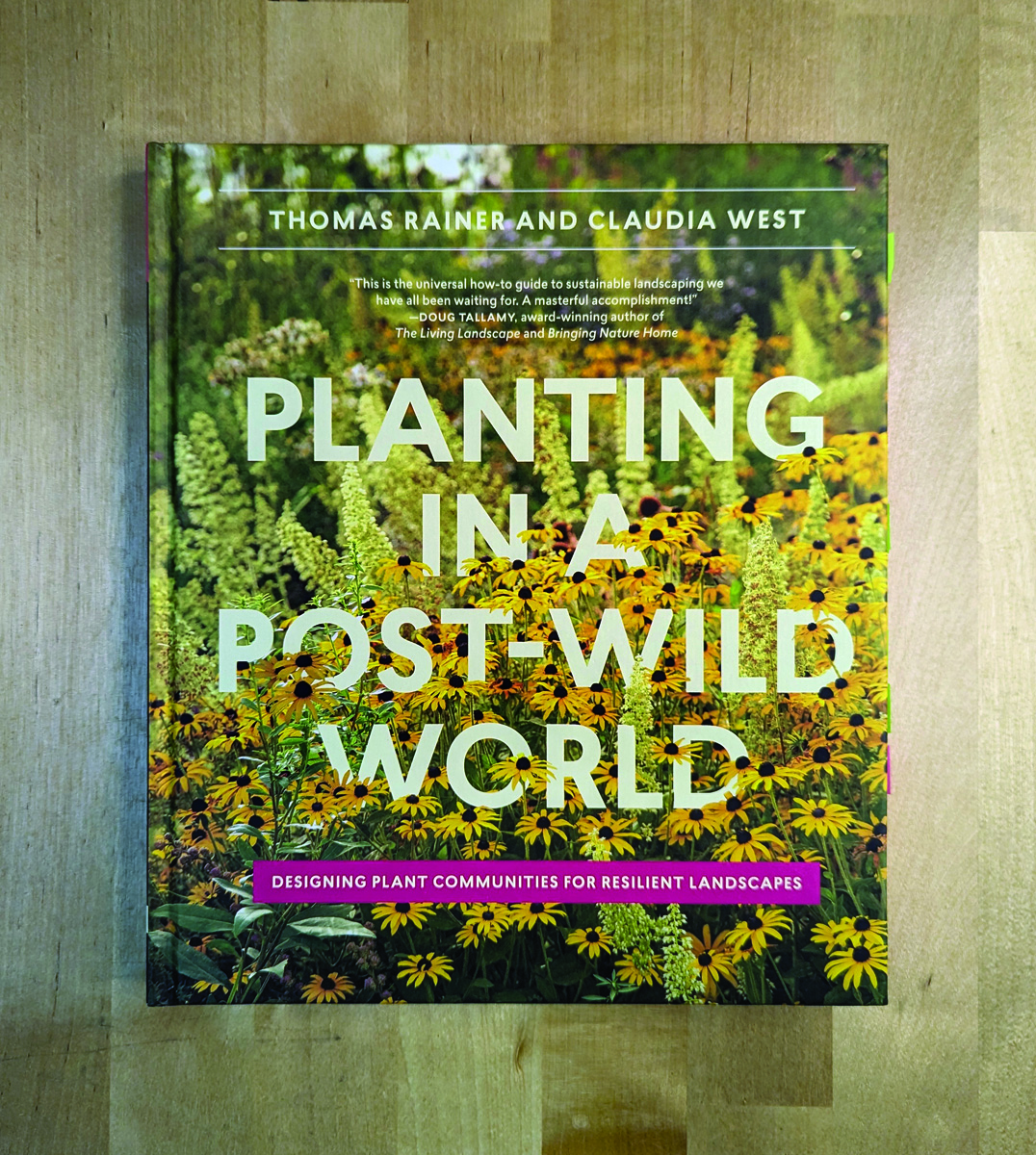
Planting in a Post-Wild World: Designing Plant Communities for Resilient Landscapes
Fine Gardening receives a commission for items purchased through links on this site, including Amazon Associates and other affiliate advertising programs.
Featuring gorgeous photography and advice for landscapers, Planting in a Post-Wild World by Thomas Rainer and Claudia West is dedicated to the idea of a new nature—a hybrid of both the wild and the cultivated—that can nourish in our cities and suburbs.




